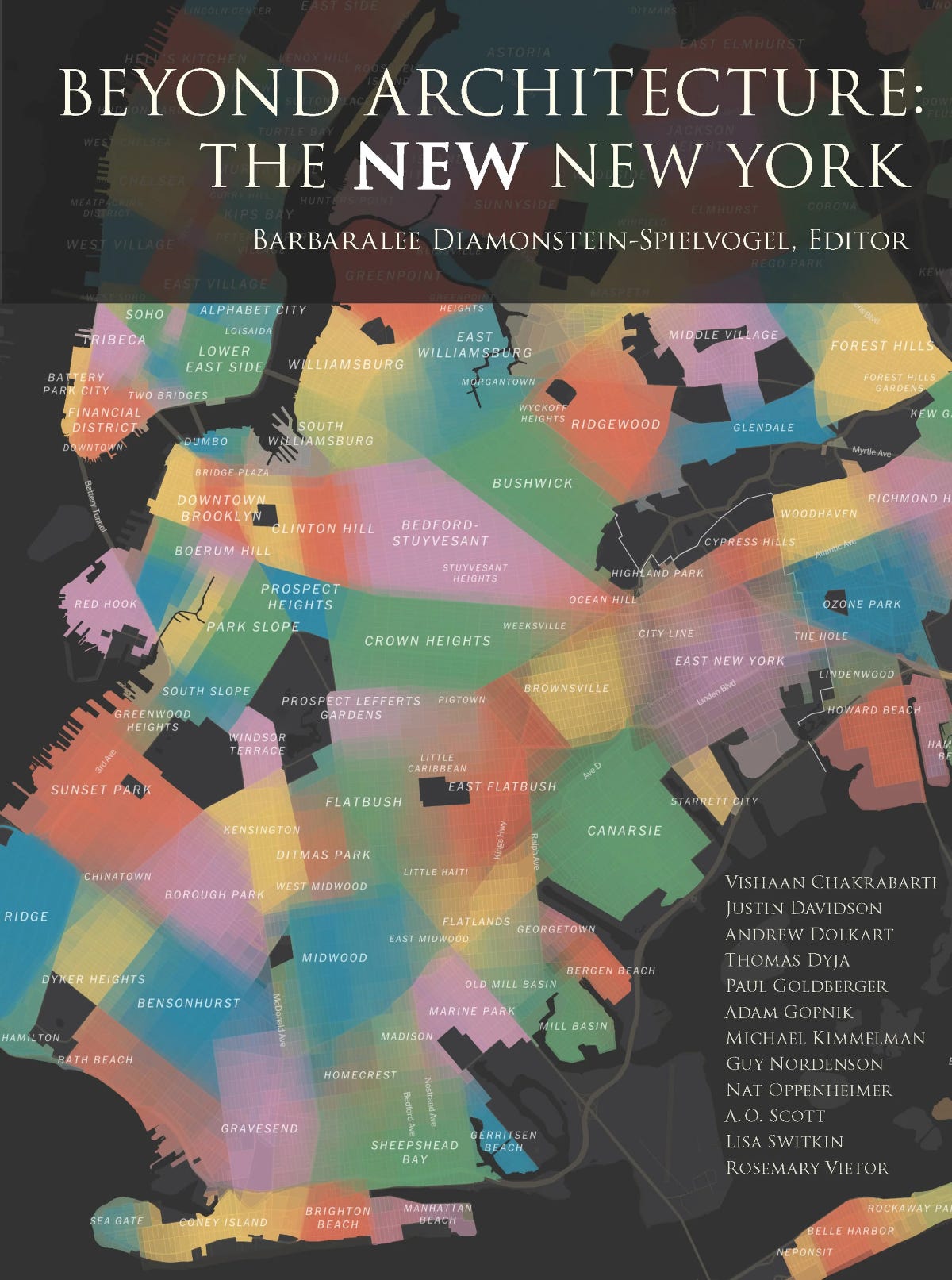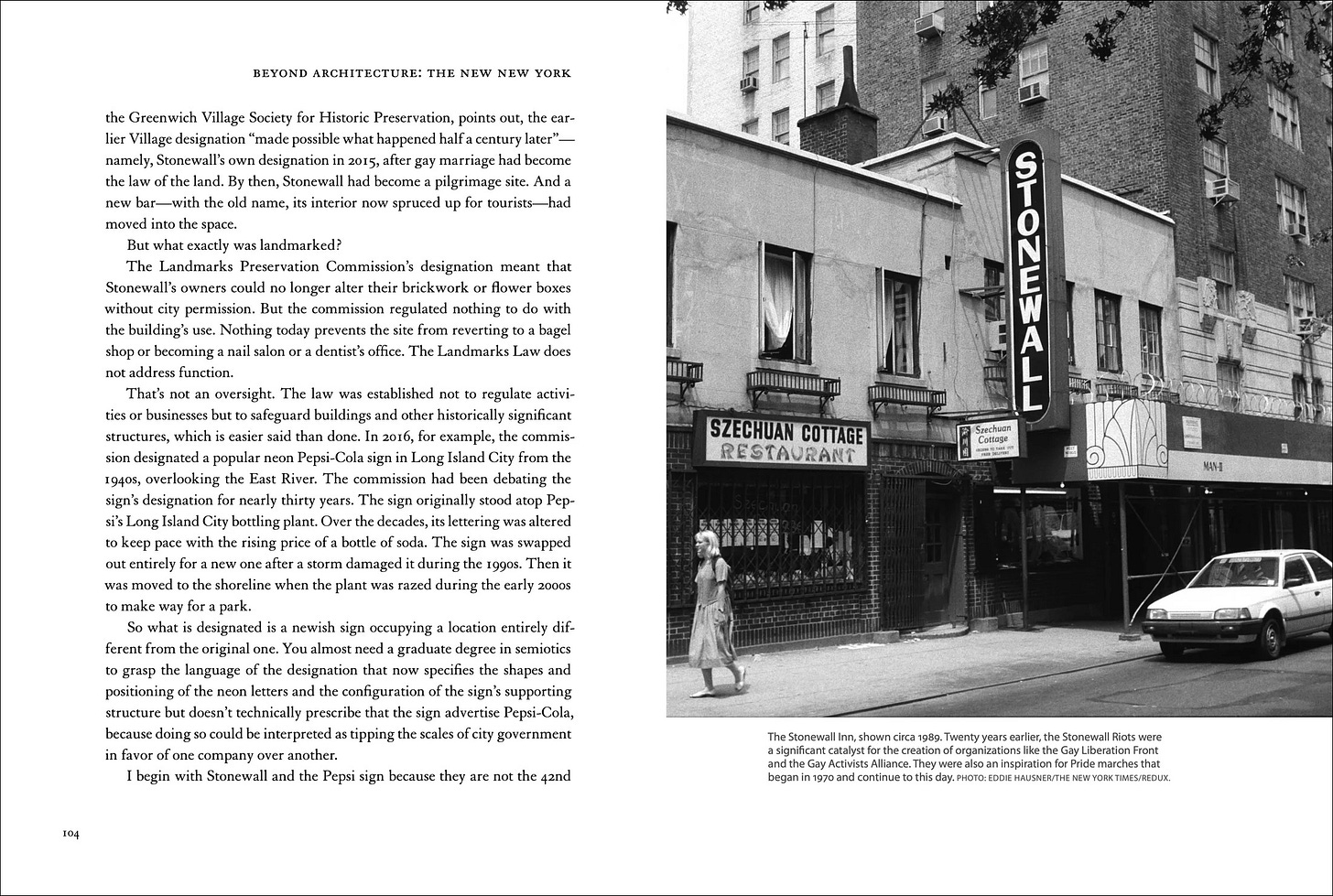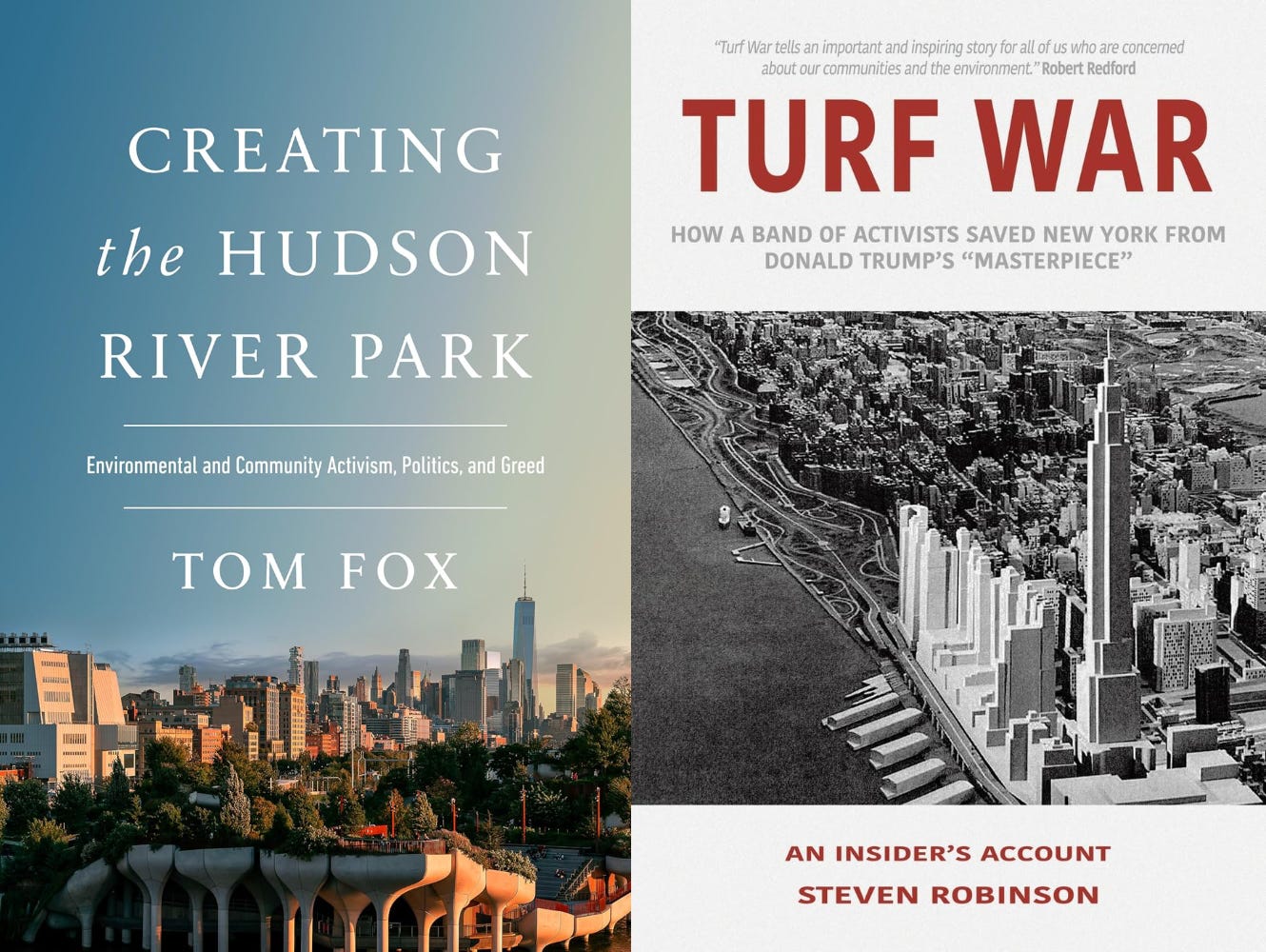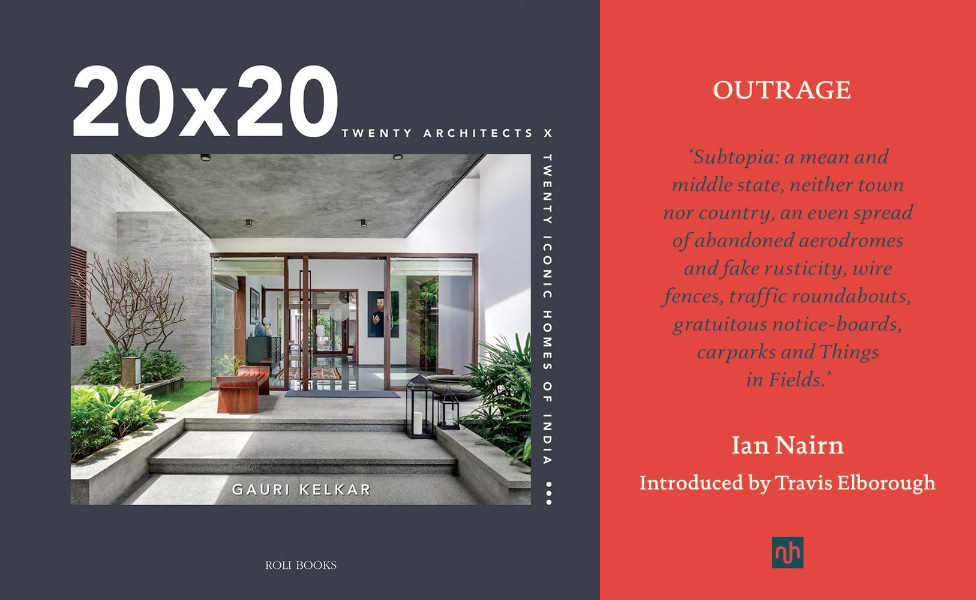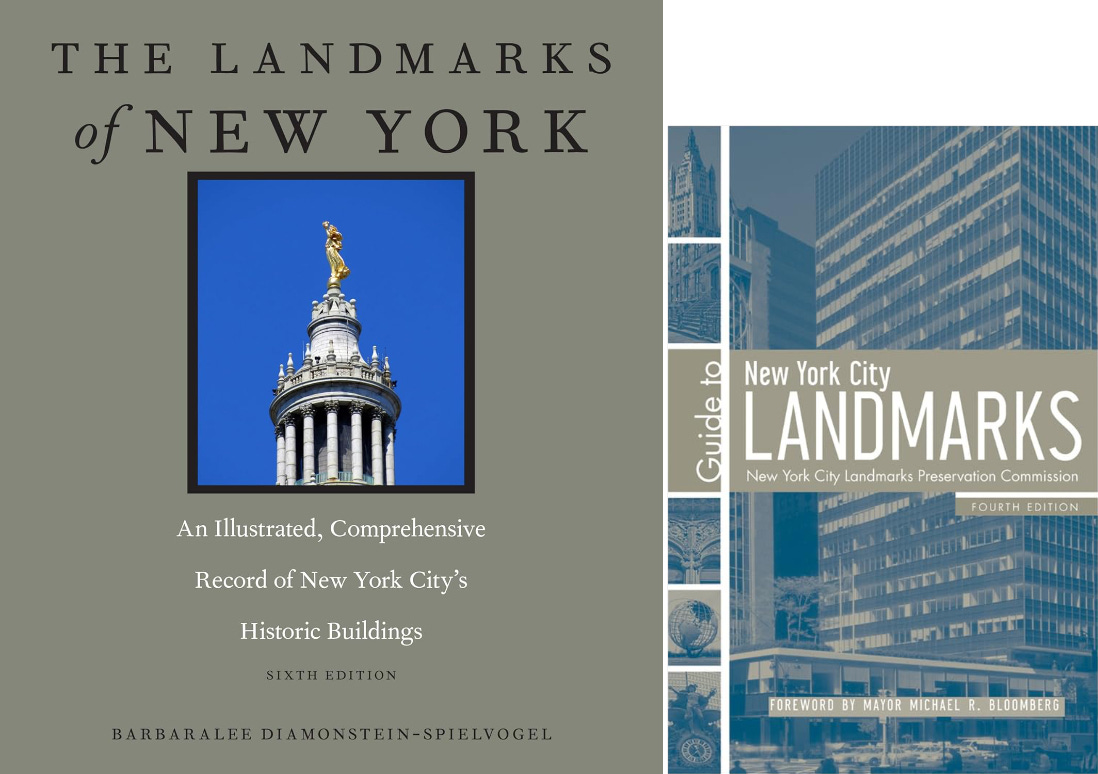This newsletter for the week of March 3 heads to New York City one month ahead of the 60th anniversary of the signing of New York City Landmarks Law. That anniversary is the subject of a new book edited by Barbaralee Diamonstein-Spielvogel: Beyond Architecture: The NEW New York. This theme of saving NYC continues with the inclusion of two books on open space along the Hudson River and two older books on historical landmarks. As always, there’s also new releases and some headlines. Happy reading!
Book of the Week:
Beyond Architecture: The NEW New York, edited by Barbaralee Diamonstein-Spielvogel (Buy from New York Review Books / from Amazon / from Bookshop)
As part of Donald Trump's assault on government institutions, progressive Biden-era programs, the natural environment, and, it seems, anyone who ever wronged Trump in his lifetime, the beginning of Trump’s second term as US president saw a few measures targeting New York City, where he made it as a developer and celebrity but is still widely disliked. Notable is his threat to pull federal funding over congestion pricing, a program to charge drivers entering Manhattan south of Central Park; it was approved by the Biden administration, put into place before Trump’s inauguration, and has quickly proven to be successful in its goal to help fund mass transit improvements. Trump's ire toward sanctuary cities found Mayor Eric Adams, indicted for bribery last year and still to face trial (if at all), working out a deal to help with the president's mass deportations in exchange for the charges being dropped. And while the president’s executive orders targeting DEI programs and transgender rights are national in scope, a local site became a rallying point for opposition to this part of Trump's agenda informed by Project 2025. I'm referring to Stonewall Inn, the famous bar that is a historical symbol of gay rights activism, a New York City Landmark, a New York State Historic Site, and a national monument; the last meant references to transgender people were expunged from the US government website and led to protests in front of Stonewall.
Stonewall’s importance and uniqueness as a historical landmark—it is listed in NYC for being culturally significant, not for any architectural merits—means it is part of Beyond Architecture: The New New York, a collection of essays celebrating the 60th anniversary of the New York City Landmarks Law, which was signed by Mayor Robert Wagner on April 19, 1965. Michael Kimmelman includes Stonewall in “The Next Frontier: Intangible Heritage” (a version of it was published by The New York Times last year, coinciding with the book’s release), alongside Barney Greengrass, the famous old smoked fish restaurant on the Upper West Side, the Flower District on West 28th Street, and other sites that ask how the landmarks law is interpreted and what those listings mean. It is one of a dozen essays exploring the myriad aspects of landmarking in New York City over sixty years.
The collection was edited appropriately by Barbaralee Diamonstein-Spielvogel, whose lengthy resume includes being commissioner of the NYC Landmarks Preservation Commission from 1972 to 1987 and, since 1995, serving as chair of the Historical Landmarks Preservation Center, which formed the NYC Landmarks60 Alliance that commissioned the essays. Her own essay starting the book touches on her contributions to preservation but also the way landmarking has changed over these sixty years and what more needs to be done (e.g., she laments the shortage of women in the essays, not reflective of their wider roles in the field). With Diamonstein-Spielvogel’s revered status, the essays that follow find big names (in the realms of NYC and preservation, at least) addressing a variety of issues, like Stonewall, that are related to landmarking in NYC but not always architectural.
The name Beyond Architecture says as much: Adam Gopnik wades into YIMBYism; A.O. Scott looks at “ghost signs”; Andrew Dolkart wonders what future landmarks will be; Guy Nordenson and Nat Oppenheimer explore engineering landmarks; and Lisa Switkin looks at landscapes. Nevertheless, my favorites focus more on buildings and architecture, including Paul Goldberger’s myth-busting history of landmarks in NYC from 1965 to the present, Justin Davidson’s case for architects today to design their buildings so they can be easily reused by future generations, and Vishaan Chakrabarti’s description of his firm’s approach to “architecture as archaeology.” There is something for nearly everyone here, all adding up to a document that illustrates the shifting nature of landmarks and the ongoing need to fight for the preservation of places that are architecturally and culturally important.
Though not related to preservation, two books published in 2024 also address efforts to save New York City, both focused on stretches of the West Side along the Hudson River, so I’m briefly discussing them here:
Creating the Hudson River Park: Environmental and Community Activism, Politics, and Greed, by Tom Fox (Buy from Rutgers University Press / from Amazon / from Bookshop)
Turf War: How a Band of Activists Saved New York from Donald Trump's “Masterpiece,” by Steven Robinson (Buy from Archway Publishing / from Amazon / from Bookshop)
Numerous books document the histories and designs of the High Line and Brooklyn Bridge Park, two industrial relics that have been turned into high-profile parks this century. Curiously, I only know of one book devoted to Hudson River Park, a similar yet considerably larger industrial-to-park conversion that also predates the other two by more than just a few years. Creating the Hudson River Park was written by Tom Fox, the first president of the Hudson River Park Conservancy, a government agency created in 1992 as the Hudson River Park Corporation and mandated to build and maintain the new park. It is a firsthand account of the long and complicated effort to preserve the Hudson River waterfront from Battery Park City to 59th Street for recreational uses rather than development. The results of community activists, environmental organizations, government agencies, and others are clear to anyone who has jogged or ridden their bike on the paths along the river, hit golf balls at Chelsea Piers, or just relaxed on a beach where a sanitation garage used to be. Much of the story is known, at least by locals, but Fox’s prominent position at the conservancy means his chronological account—from Westway in 1974 to the book’s release 50 years later—is extremely thorough. It’s also a bit dry and a slog to read cover to cover; thankfully, each chapter covering a few years in the life of the park is short, and the index allows people looking for specific information to find it easily.
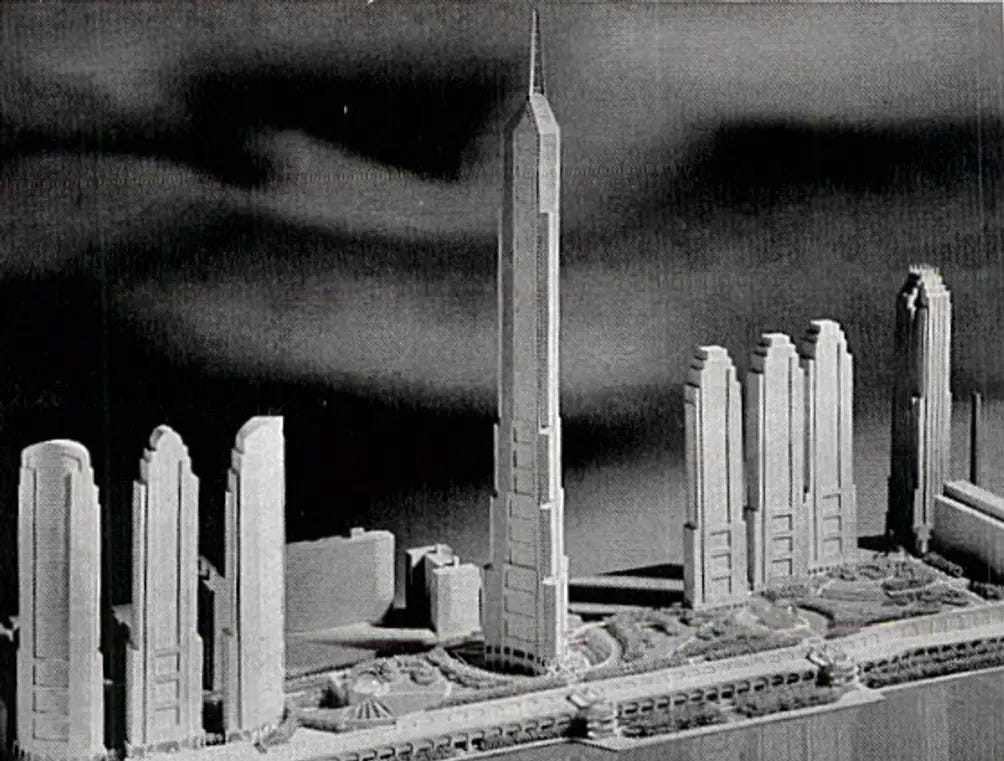
More enjoyable as a narrative is Turf War, architect Stephen Robinson’s firsthand account of a development site immediately north of Hudson River Park, from 59th Street to 72 Street. Robinson had a key role in Westpride, a group of Upper West Siders who banded together to fight Donald Trump’s efforts to build Television City on the disused Penn Yards in the 1980s. Originally designed by Helmut Jahn with a 150-story tower that would have had NBC as its anchor tenant (image above), the mixed-use development would have been built on a huge platform cutting off a good chunk of the Upper West Side from the Hudson River. A subsequent scheme by Alexander Cooper (image on cover of book), who planned Battery Park City’s neo-traditional layout, was not much better. NBC left the picture and then the efforts of Westpride and other community groups pushed the development toward a more manageable size with public space along the river. The results, Riverside South and Riverside Park South, are far from perfect, but certainly better than the plans Trump abandoned. If anything comes to the fore in Robinson’s account, it is the role of government and the importance of community groups: When a city government puts the welfare of developers over that of the public, community groups need to step in, not only to fight for what they see is right but to remind the government of whom it serves.
Books Released This Week:
(In the United States, a curated list)
Adaptive Reuse: Extending the Lives of Buildings, by Liliane Wong (Buy from Birkhäuser / from Amazon / from Bookshop) — “On the background of long years of teaching and publishing, and using vivid imagery from Frankenstein to Rem Koolhaas and beyond, the author provides a comprehensive introduction to architectural design for adaptive reuse projects.” (This is a revised and expanded edition of Wong’s 2016 book of the same name.)
Architecture and Welfare: Scandinavian Perspectives, edited by Thordis Arrhenius, Ellen Braae and Guttorm Ruud (Buy from Birkhäuser / from Amazon / from Bookshop) — “This book explores how architecture, once seen as a medium for universal welfare, inclusion, and political participation, is now often associated with the opposite, such as alienation, exclusion, and segregation. The volume offers new perspectives on the history and redesign of post-war architecture and urbanity.”
20 x 20: Twenty Architects x Twenty Iconic Home of India, by Gauri Kelkar (Buy from ACC Art Books [US distributor for Roli Press] / from Amazon / from Bookshop) — “Take a tour through a select collection of homes across the length and breadth of India built by architects both new and experienced, conjured in diverse geographies.”
Outrage, by Ian Nairn (Buy from NYRB [US distributor for Notting Hill Editions] / from Amazon / from Bookshop) — “In June of 1955, The Architectural Review […] published a special issue featuring one essay called Outrage by Ian Nairn. For the first time in North America and the first time in decades in the UK, Nairn’s influential essay is newly available, now in a handsome volume complete with the original images.”
Full disclosure: As an Amazon Associate, AbeBooks Affiliate, and Bookshop.org Affiliate, I earn commissions from qualifying purchases made via any relevant links above and below.
Book News:
The Architect’s Newspaper reports that Places Journal is curating a “people’s library” for the US Pavilion at the Venice Architecture Biennale opening in May. The article links to a spreadsheet where anyone can add titles related to the pavilion’s theme, Porch: An Architecture of Generosity, “and American civil society more broadly.”
Over at Architect magazine Aaron Betsky reviews Diller Scofidio + Renfro’s Architecture, Not Architecture, which I reviewed back in Week 6/2025. He says it “raises the question: who needs monographs?” Unfortunately, the logic of his answer seems to preclude the need for any books when digital versions of the same content are available; and his comments on Architecture, Not Architecture’s contents make it seem like he reviewed a PDF of the DS+R monograph, not the physical, 7-pound (a lot more than “just over two pounds,” Mr. Betsky) two-books-in-one that is hardly, “by current standards, a modest affair.”
The latest issue of Khōrein: Journal for Architecture and Philosophy, an open-access, peer-reviewed journal published biannually by the Institute for Philosophy and Social Theory at the University of Belgrade, was released in February under the theme “END.” It features interviews with Peter Eisenman and Sylvia Lavin, reviews of Kim Förster's Building Institution and Dana Cuff's Architectures of Spatial Justice, and a long essay by Patrik Schumacher saying, in his characteristic libertarian hyperbole, that “we are witnessing the end of architecture, the voluntary self-dissolution of architecture,” which has been usurped by “woke ideology.” These and other contributions are all freely accessible as PDFs.
Colin Marshall takes a deep dive into Emergent Tokyo: Designing the Spontaneous City on his Substack. The 2022 book was one of my favorites from that year, but I was only able to give it a “book brief” on my blog, so I’m glad to see this beautifully illustrated book gaining more attention.
From the Archives:
Dozens of guides to New York City landmarks have been published in the last sixty years, both officially by the Landmarks Preservation Commission and by individuals and groups with similar goals of preserving important buildings across the city and educating the public about them. Suitable to single out here are The Landmarks of New York: An Illustrated, Comprehensive Record of New York City's Historic Buildings, edited by Barbaralee Diamonstein-Spielvogel, and Guide to New York City Landmarks, by the New York City Landmarks Preservation Commission. The former, whose sixth edition was released in 2016, is a hefty coffee table book with lots of photos, while the latter, its fourth edition coming in 2008, is a portable guidebook with maps; I’m guessing that most people who fall into these books’ audience have, like me, one edition of both titles in their library. While a lot of the information on the individual landmarks and historic districts overlaps between the two books, the different formats result in different organizations: chronological for The Landmarks of New York, and by borough and neighborhood for the LPC guide. Yet today, respectively seven and seventeen years since their latest updates, I can’t help wonder if either book will receive another edition, or if people will have to go online, where information is found but not as carefully organized as it is here.
Thank you for subscribing to A Weekly Dose of Architecture Books. If you have any comments or questions, or if you have your own book that you want to see in this newsletter, please respond to this email, or comment below if you’re reading this online. All content is freely available, but paid subscriptions that enable this newsletter to continue are welcome — thank you!
— John Hill




